
34
HNUE JOURNAL OF SCIENCE
Educational Sciences 2024, Volume 69, Issue 5B, pp. 34-42
This paper is available online at http://hnuejs.edu.vn/es
DOI: 10.18173/2354-1075.2024-0133
LANDMARKS AND ORIENTATIONS
IN TEACHING AND LEARNING SCHOOL MATHEMATICS
Thomas Jahnke
Institute of Mathematics, University of Potsdam, Potsdam city, Germany
Corresponding author: Thomas Jahnke, e-mail: jahnke.thomas@icloud.com
Received June 22, 2024. Revised September 16, 2024. Accepted December 27, 2024.
Abstract. This talk explores the interconnected and critical issues of competencies,
applications, and assessments in the teaching and learning of school mathematics. We
examine the dual roles of competencies as both helpful and questionable, the limits and
significance of applications, and the unintended consequences of assessments. These themes
are intricately linked and profoundly influence one another. To address these challenges
effectively, we analyze the core nature and character of school mathematics as a foundation
for informed decision-making. Additionally, we consider the transformative and
unpredictable impacts of artificial intelligence (AI) on mathematics education, concluding
with four practical takeaways for educators and researchers.
Keywords: competencies, mathematics education, artificial intelligence, educational
assessment, applications in Mathematics.
1. Introduction
The teaching and learning of school mathematics play a crucial role in developing students'
cognitive abilities, fostering problem-solving skills, and preparing them for future challenges.
However, significant challenges persist in the field, including fragmented lesson structures, the
overemphasis on competencies, and the controversial role of assessments. Heymann (1996)
highlighted the necessity of central ideas in mathematics education to prevent lessons from being
reduced to disconnected topics and to help students understand the broader structure of
mathematics [1]. Similarly, the Danish KOM Project (2002) introduced a competency-based
framework, shifting the focus from content to cognitive processes. However, critiques of the
model reveal its limitations in portraying mathematics as purely functional rather than preserving
its epistemological essence [2]. The increasing integration of applications into mathematics
education has further complicated the landscape. While initiatives like the International Study
Group for the Teaching of Mathematical Modelling and Applications (ICTMA) emphasize the
importance of contextualizing mathematics to real-world scenarios, they often risk
overshadowing the discipline's intrinsic power of abstraction and decontextualization [3].
Furthermore, assessment-driven reforms, influenced by global assessments such as PISA, have
promoted a culture of examination at the expense of meaningful learning experiences [4]. This
study seeks to address these interconnected issues by offering a unified perspective on
competencies, applications, and assessments in mathematics education. Unlike previous research,
which often isolates these elements, this work highlights their collective impact and the need for

Landmarks and orientations in teaching and learning Mathematics
35
coherence. Additionally, the study explores the transformative potential of artificial intelligence
(AI) in personalizing and adapting mathematics teaching and learning, a relatively underexplored
domain in existing literature. Through this novel approach, the research aims to provide
meaningful orientations for improving mathematics education in an evolving educational landscape.
2. Content
2.1. Main problems
Figures 1 and 2 show the main problems of organizing and teaching mathematics lessons.
Figure 1. a sandheap
Figure 2. a page from a German mathematics textbook

Thomas Jahnke
36
Note for Figure 2: Translation of the work instructions: 1. and 2. Simplify the following
terms as much as possible. 3. Calculate the following products of sums. 4. Calculate using the
binomial formulas.
- A) What is the core or essence of this substance 'school mathematics'?
B) School mathematics should not look like a sand heap neither overall or in a single lesson.
They need a recognizable structure on the whole and in detail.
- We must discuss which kinds of cognitive activities we want to activate and foster in the
teaching-learning process in mathematics lessons.
The sandheap substance problem 1. As we discuss later below.
The sandheap structure problem 1. B was raised and discussed by Hans Werner Heymann in
his famous and epochal book ‘Allgemeinbildung und Mathematik’ (Weinheim und Basel 1996).
(A lightly shortened version for the English reader: Hans Werner Heymann: Why Teach
Mathematics: A Focus on General Education. Translated by Thomas La Presti. Mathematics
Education Library. Dordrecht (NL): Klüwer 2003). In chapter 4.2.3 he discusses three motives
for a 'central ideas' concept:
(1) The aim is to prevent the phenomenon so often complained of, that mathematics lessons
are broken down into isolated items.
(2) On the basis of central ideas, the pupils should be able to gain an appropriate picture of
mathematics and be able to recognize the "structure of the subject".
(3) With the help of central ideas, it should become visible to the learners how the
mathematics taught relates to the rest of the world that the students can experience”.
After compiling a synopsis: and catalogs of central ideas for mathematics education (from
the second half of the 20th century), he proposes his catalog:
- Idea of Number;
- Idea of Measurement;
- Idea of Spatial Structuring;
- Idea of Functional Coherence;
- Idea of the Algorithmus;
- Idea of Mathematical Modelling.
Certainly, today we miss the Idea of Uncertainty or something like that, but despite the
compatibility with Bruner's much-propagated conception of a spiral curriculum, which requires
the realization of such central ideas, there was no real further development or sharpening of the
‘Big Ideas’ (Leading Ideas/Strands/Domains). The reason for this deficiency is the concentration
of the discussion on the second problem, the tenor of which ultimately pushes the material and
content of school mathematics completely aside.
2.2. Competence and competencies
The cognitive activities problem (2. B) was treated in a groundbreaking and momentous way
in The Danish KOM project (2002) under the direction of Mogens Niss [2]:
“The fundamental idea of the project is to base the description of mathematics curricula
primarily on the notion of a “mathematical competency”, rather than on syllabi in the traditional
sense of lists of topics, concepts, and results. This allows for an overarching conceptual
framework which captures the perspectives of mathematics teaching and learning at whichever
educational level”.
“There are eight competencies which can be said to form two groups. The first group of
competencies are to do with the ability to ask and answer questions in and with mathematics:

Landmarks and orientations in teaching and learning Mathematics
37
1. Thinking mathematically;
2. Posing and solving mathematical problems;
3. Modelling mathematically;
4. Reasoning mathematically.
The other group of competencies are to do with the ability to deal with and manage
mathematical language and tools:
5. Representing mathematical entities;
6. Handling mathematical symbols and formalisms;
7. Communicating in, with, and about mathematics;
8. Making use of aids and tools.
In the worldwide adaptation, adoption, and transformation of these competences, it has been
and is overlooked that they are based on a picture of the nature of mathematics and school
mathematics, which, by the way, we will also encounter later in the PISA framework.
“To master mathematics means to possess mathematical competence. But then, what is that?
To possess a competence (to be competent) in some domain of personal, professional, or social
life is to master (to a fair degree, modulo the conditions and circumstances) essential aspects of
life in that domain. Mathematical competence then means the ability to understand, judge, do,
and use mathematics in a variety of intra- and extra-mathematical contexts and situations in which
mathematics plays or could play a role”.
Mastering mathematics means here to apply and use mathematics. Mathematics is not
anymore a domain or matter in its own right, an epistemological approach to the world, but a tool
for dealing with it. The functional character of mathematics in this view is most evident when
mathematics is replaced by music or another field of education in the above quote. The concept
of general education is here narrowed down to a social education of utility. While this does not
deprive the eight competencies of their meaning or significance, it does shed light on their tenor
and background, and also explains the nature of their reception.
Furthermore, the grey ‘Competence Flower’ (Figure 3) comes down to a detailed matrix of
everything which in a nonsensical way parcels out the cognitive activities in the teaching and
learning of mathematics (Figure 4).
Figure 3. The Competence Flower

Thomas Jahnke
38
Figure 4. The separating table of everything from Area 1 to Area n
In the article ‘Mathematical competencies revisited’, Mogens Niss and Tomas Højgaard have
given the 2002 concept of competence an additional orientation [5]:
“Competence is someone’s insightful readiness to act appropriately in response to the
challenges of given situations”.
“Mathematical competence is someone’s insightful readiness to act appropriately in response
to all kinds of mathematical challenges pertaining to given situations”.
Figure 5. Three-dimensional competence matrix for Upper Secondary in Germany
Levels
Leading Ideas
General Mathematical
Competencies


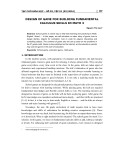

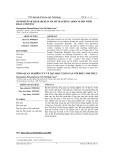

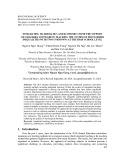
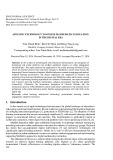

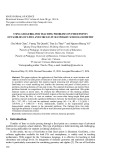
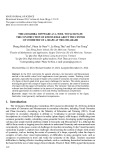

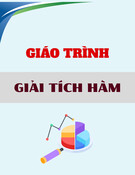
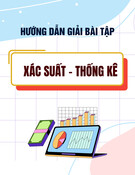
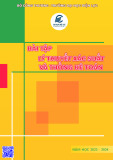






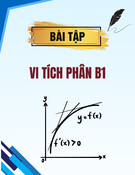
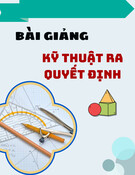
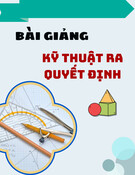
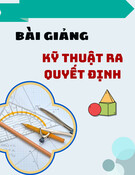
![Quyển ghi Xác suất và Thống kê [chuẩn nhất]](https://cdn.tailieu.vn/images/document/thumbnail/2025/20251030/anh26012006/135x160/68811762164229.jpg)
